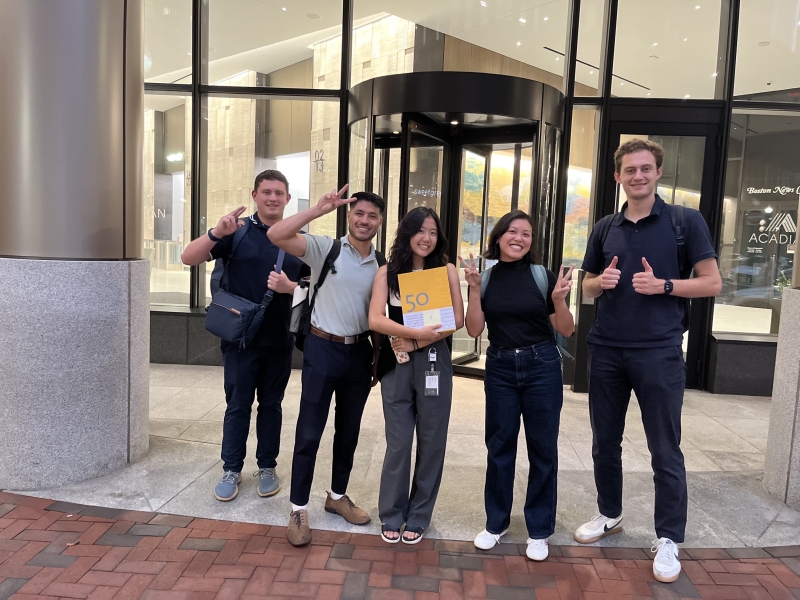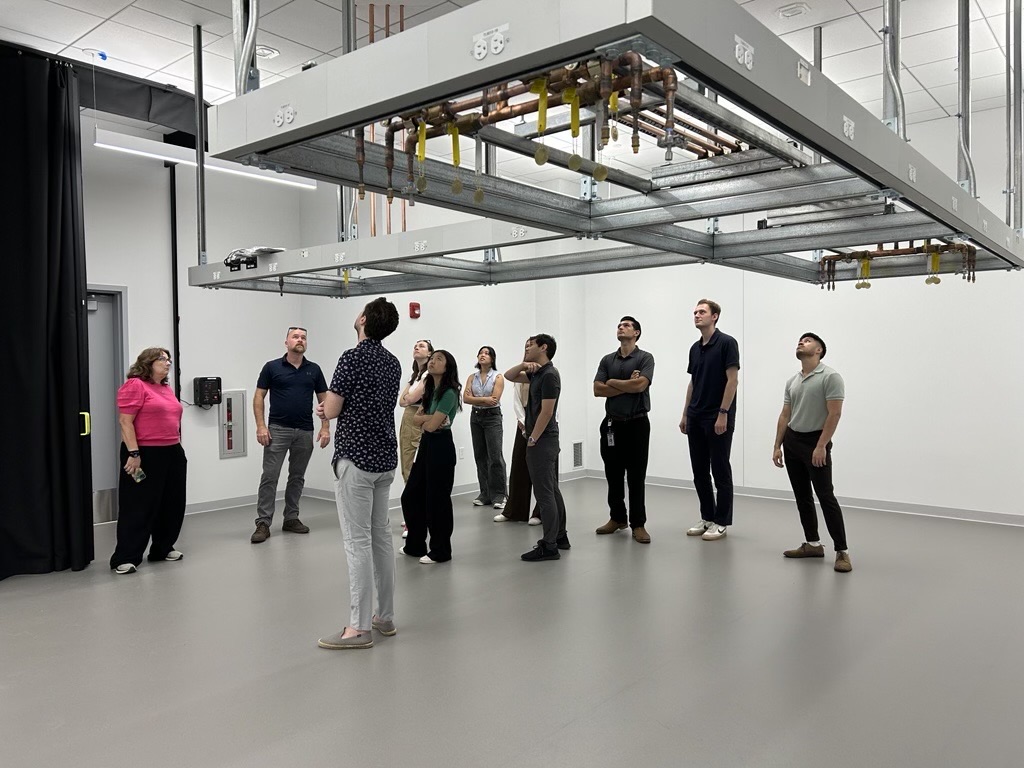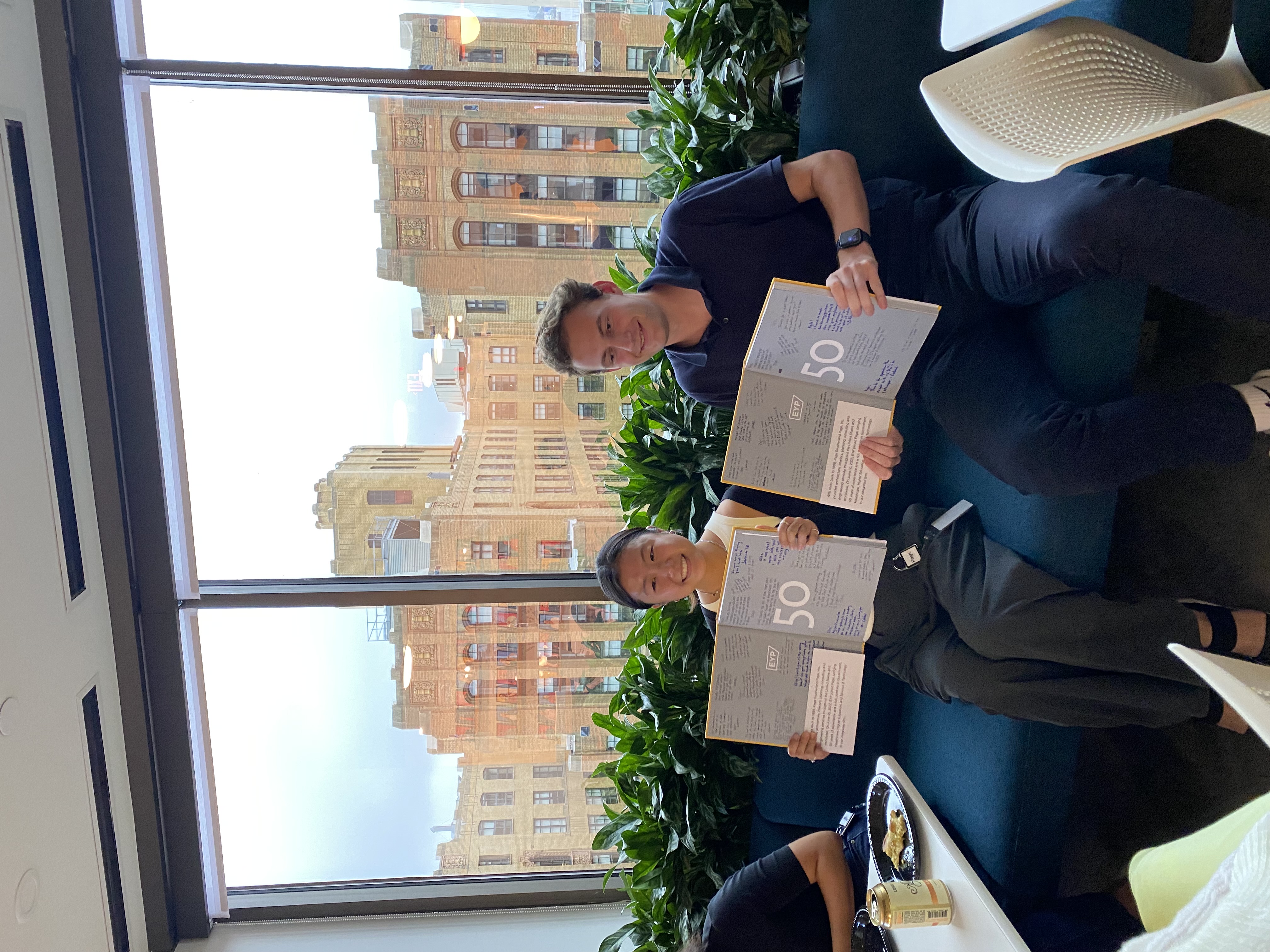 Elise (center) with coworkers outside the Page Boston office
Elise (center) with coworkers outside the Page Boston office
As part of Page’s partnership with the National Organization of Minority Architects (NOMA), the Boston office recently hosted 2023 NOMA fellow Elise Park for an 8-week internship. Elise is currently working towards her Bachelor of Architecture with minors in civic engagement and equity and innovation at the New York Institute of Technology in Old Westbury on Long Island. She was accepted into the fellowship program after establishing a NOMAS (National Organization of Minority Architecture Students) chapter at her school and becoming actively involved for several years.
“Elise brought energy, passion, and a strong willingness to learn to the Page Boston office this past summer,” says Eric Der, project architect who served as Elise’s mentor. “Her personal interests in human-centric and inclusive design helped support Page’s efforts for ethical and sustainable design, and her work to facilitate data gathering after we signed the AIA Materials Pledge was crucial to our efforts to advance our positive impact.”
In a conversation with Page, Elise shares more about her passion for architecture, her favorite building (it’s in Chile!), and the greater impact of NOMA.
How did you develop an interest in architecture?
I got into architecture because my father wanted to go to school for it, but he couldn’t because he had to support his family. I’m also really interested in the way buildings can help people in all facets of life.
What prompted you to apply for a NOMA fellowship?
When I was a freshman, NYIT Old Westbury only had an active American Institute of Architecture Students (AIAS) chapter. I found out about NOMA and decided to go through the process of initiating the first chapter for my school. I spoke with our administration, our faculty and NOMA nationals, and was able to establish our Long Island chapter. You can’t apply for the fellowship until your third year, so I’d been waiting until then. I applied, got accepted into the first round, interviewed with different firms and ultimately chose Page.
Describe your experience in the Page Boston office.
On my first day, I sat down with the office’s managing director Mike Collard, my group leader Valerie Towe, and Eric, my mentor. They asked what I want to do, what I’m interested in and how they can help. I said I wanted to be involved in large- and small-scale projects and with research because I’m a research assistant at NYIT.
For the first month, I worked on a project for Boston University, a biomedical engineering space. Then I switched to a larger embassy project and worked on permitting documentation. During odd hours or when I had more free time, I conducted research on inclusive design and sustainable and ethical material sourcing.

Why are you passionate about inclusive design?
I’ve learned there’s a very clear distinction between accessibility standards and inclusive design. Inclusive design aims to make the living experience as enjoyable and as easy as possible for all kinds of people. We learn about making sure a bathroom is ADA accessible and that you have at least one elevator or one ramp, but it’s important for design to think past that.
During my time with Page, I learned about the cool things they did to make Grinnell College as inclusive as possible. I brought that mentality back to school and tried to think about more than just complying with standards.
What building, anywhere in the world, inspires you the most?
It’s a project called the Villa Verde in Chile. The architect is Alejandro Aravena – he won the Pritzker Architecture Prize. It’s a very simple house; half is built out for you, and the other half is empty. This concept of an incremental building allows residents to fill in the rest of the house based on how they want to use it. Somebody might need extra bedrooms, an office space, a studio or a larger living room. It gives you that sense of autonomy. It’s not one of the fanciest buildings ever, but I really like the concept behind it and think it’s inspired my architecture ethics.

How does your generation view the future of architecture?
I can draw that back to inclusive design. I think we’re becoming a lot more aware of what works and what doesn’t, and how we can be as accommodating as possible to everybody, especially because a lot of projects are open public spaces. I’ve seen more inclusive design at our school as well, compared to the past. There’s more consideration for the circulation of a building and how you enter and exit. People are starting to put that at the forefront of design instead of just building something pretty.
Environmental and social impact is a big thing, too. What kind of environmental impact will the materials we use have on the future? How can we sequester carbon and offset negative energies?
How did your NOMA fellowship and time with Page prepare you for life after graduation?
Before the fellowship, I think I was burned out from school. My time at Page revitalized my interest in architecture and the built environment because the people I worked with were just so skilled and passionate about what they do. It was really nice to get real-world experience.
What would you like to share with others who are interested in the NOMA fellowship?
I’ve been encouraging all my friends at school to apply because NOMA is so helpful. They partner with firms that align with values they hold, and the benefits of working at a firm before graduation are so invaluable. I didn’t realize I needed it as much as I did. Many minority architecture students can’t go live in a different city or get internships because of economic and societal hardships. NOMA gives minority architecture students a boost, and the fellowship offers a great experience.